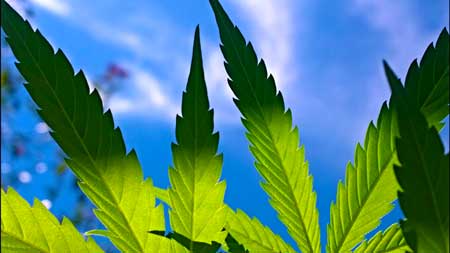Hi!
My plants and buds have pretty much stopped growing for the past few weeks, and I'm hoping to find some good advice from people with more experience than myself.
It's my first grow, so I'm the textbook example of a beginner. They're still alive at least!
The top leaves of the White Widow has started to shift to slightly yellow, but only in the last couple of days, I did not notice any discoloring last week.
The sprouts were put in soil in the end of January with 24h light, mid March they were about 75% of the size they're today, and I switched to 12/12. Mid April I thought they looked a bit sad and read somewhere that these autoflowering strains thrive in more light, so I switched up to 18/6 which I've been running since.
I was expecting a lot bigger buds, and being ready for harvest end of April, ofc I understand that the numbers you get from the seed suppliers only apply in absolut perfect conditions. But right now I'm absolutely clueless, will it get any bigger? The majority of the pistils have turned brown, should I harvest now?
Growing in soil, but started with the seeds in paper towels, put them in smaller pots and replanted in bigger once they outgrew their baby pots. Both are autoflowering, the left one White Widow and the right one Royal Haze, at least according to the seller.
Nutrients:
As it's kind of a "test-run" and most guides I've been finding talks about specific, mostly american, brands of nutrients, that's sadly not available in Scandinavia. So I just grabbed some generic all-around plant nutrient I mix with the water hoping for the best. Containing the following:
6% Nitrogen (1.5% nitrate, 1.5% ammonium, 3% carbamide); 2.6% Phosphate; 5% Potassium; 0.01% Boron; 0.002% Copper; 0.02% Iron; 0.01% Manganese; 0.001% Molybdenum; 0.002% Zinc
Light:
8.5W LED strip-light for plants.
PPF: 25 μmol/s
Density: 23 μmol/m²/s
Wave-length: 450-640 nm
Current Light-Cycle: 18h light, 6h dark (no light pollution from outside)
Air & Ventilation:
Pretty powerful fan running about 5-10 minutes per hour on a schedule, pushing air out from the top through a carbon filter. Fresh air flows in naturally from below the plants when the fan is running.
Temperature: 21 C / 70 F
Relative Humidity: 45-55%
My plants and buds have pretty much stopped growing for the past few weeks, and I'm hoping to find some good advice from people with more experience than myself.
It's my first grow, so I'm the textbook example of a beginner. They're still alive at least!
The top leaves of the White Widow has started to shift to slightly yellow, but only in the last couple of days, I did not notice any discoloring last week.

The sprouts were put in soil in the end of January with 24h light, mid March they were about 75% of the size they're today, and I switched to 12/12. Mid April I thought they looked a bit sad and read somewhere that these autoflowering strains thrive in more light, so I switched up to 18/6 which I've been running since.
I was expecting a lot bigger buds, and being ready for harvest end of April, ofc I understand that the numbers you get from the seed suppliers only apply in absolut perfect conditions. But right now I'm absolutely clueless, will it get any bigger? The majority of the pistils have turned brown, should I harvest now?
Growing in soil, but started with the seeds in paper towels, put them in smaller pots and replanted in bigger once they outgrew their baby pots. Both are autoflowering, the left one White Widow and the right one Royal Haze, at least according to the seller.
Nutrients:
As it's kind of a "test-run" and most guides I've been finding talks about specific, mostly american, brands of nutrients, that's sadly not available in Scandinavia. So I just grabbed some generic all-around plant nutrient I mix with the water hoping for the best. Containing the following:
6% Nitrogen (1.5% nitrate, 1.5% ammonium, 3% carbamide); 2.6% Phosphate; 5% Potassium; 0.01% Boron; 0.002% Copper; 0.02% Iron; 0.01% Manganese; 0.001% Molybdenum; 0.002% Zinc
Light:
8.5W LED strip-light for plants.
PPF: 25 μmol/s
Density: 23 μmol/m²/s
Wave-length: 450-640 nm
Current Light-Cycle: 18h light, 6h dark (no light pollution from outside)
Air & Ventilation:
Pretty powerful fan running about 5-10 minutes per hour on a schedule, pushing air out from the top through a carbon filter. Fresh air flows in naturally from below the plants when the fan is running.
Temperature: 21 C / 70 F
Relative Humidity: 45-55%


Comment